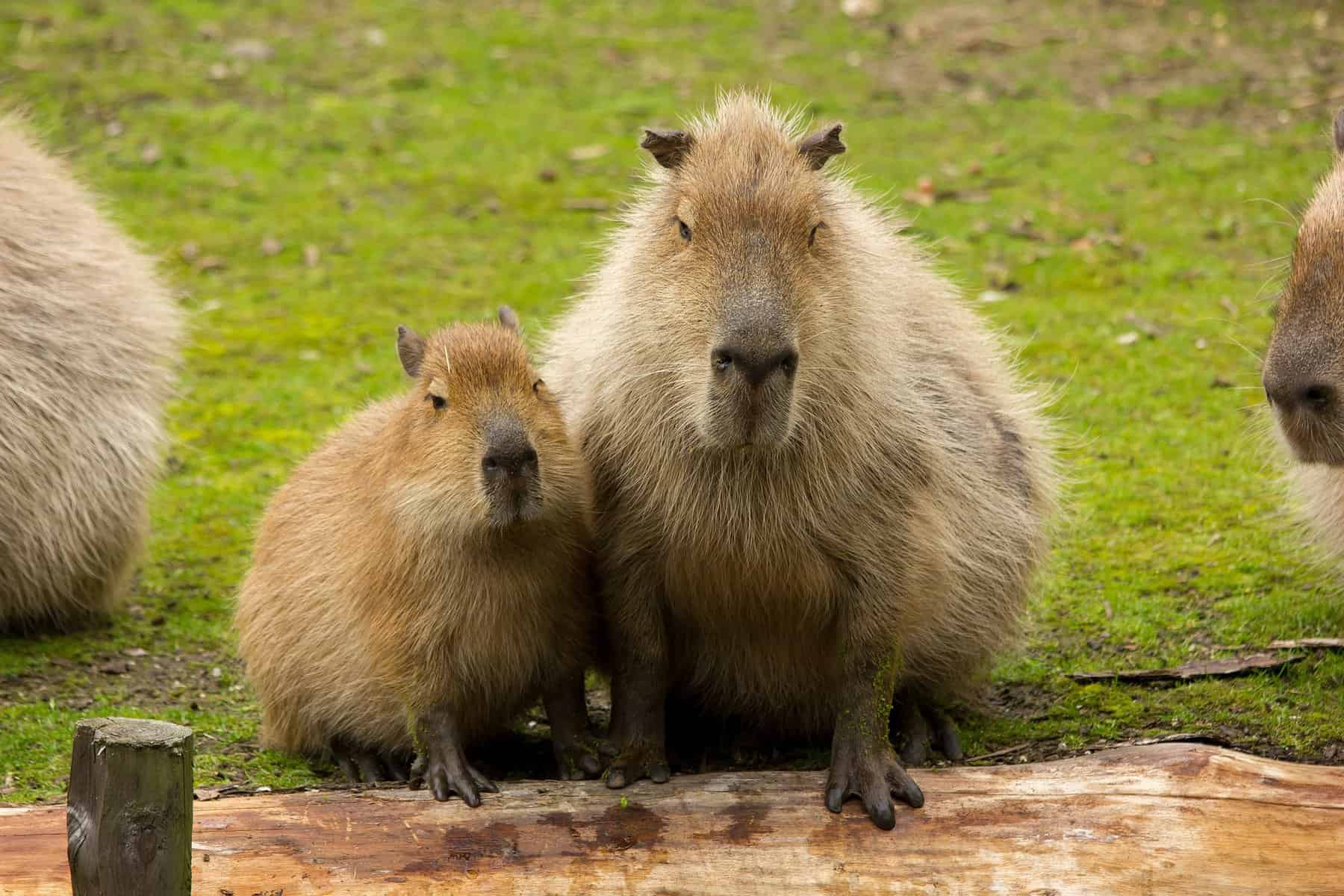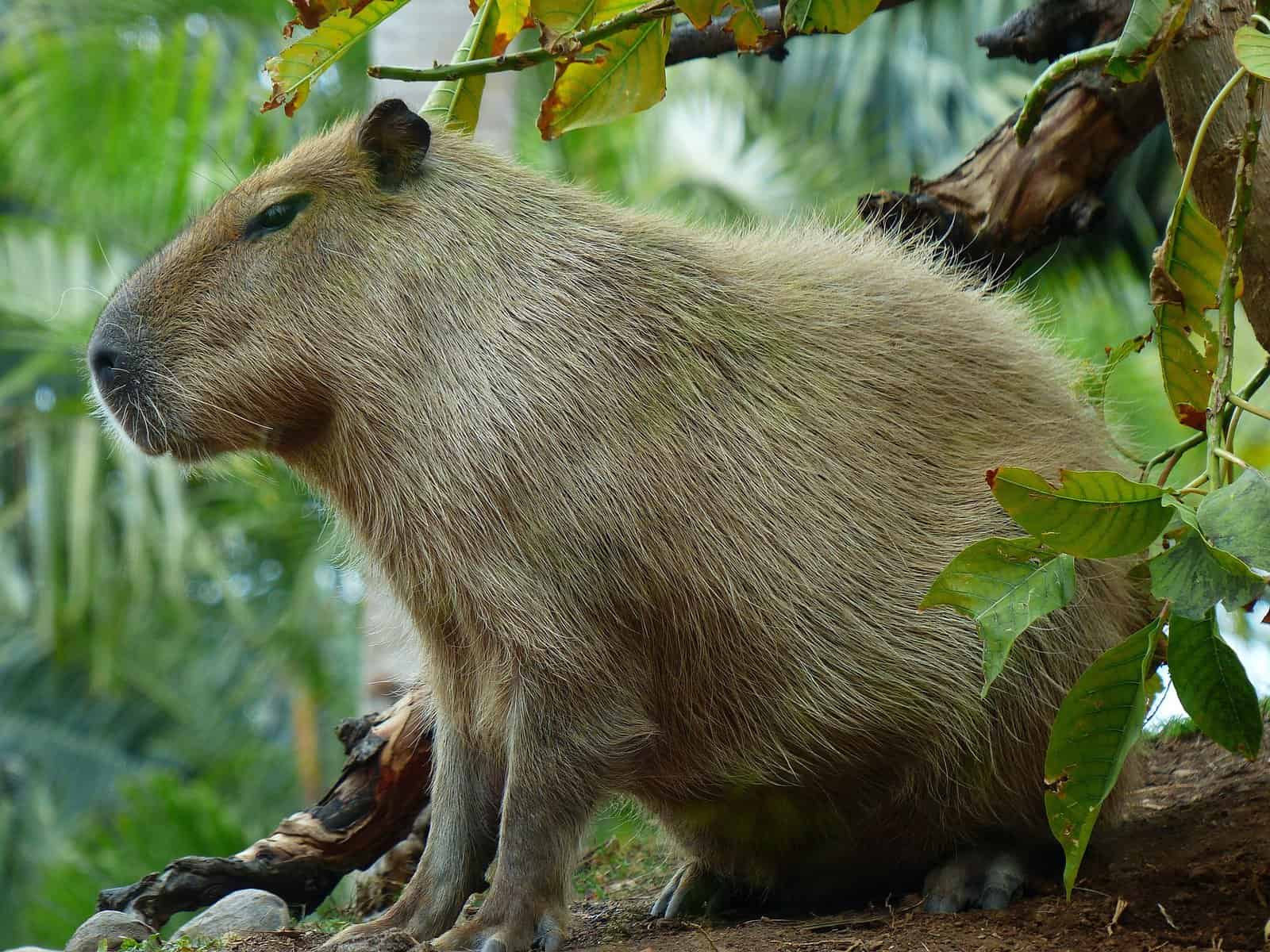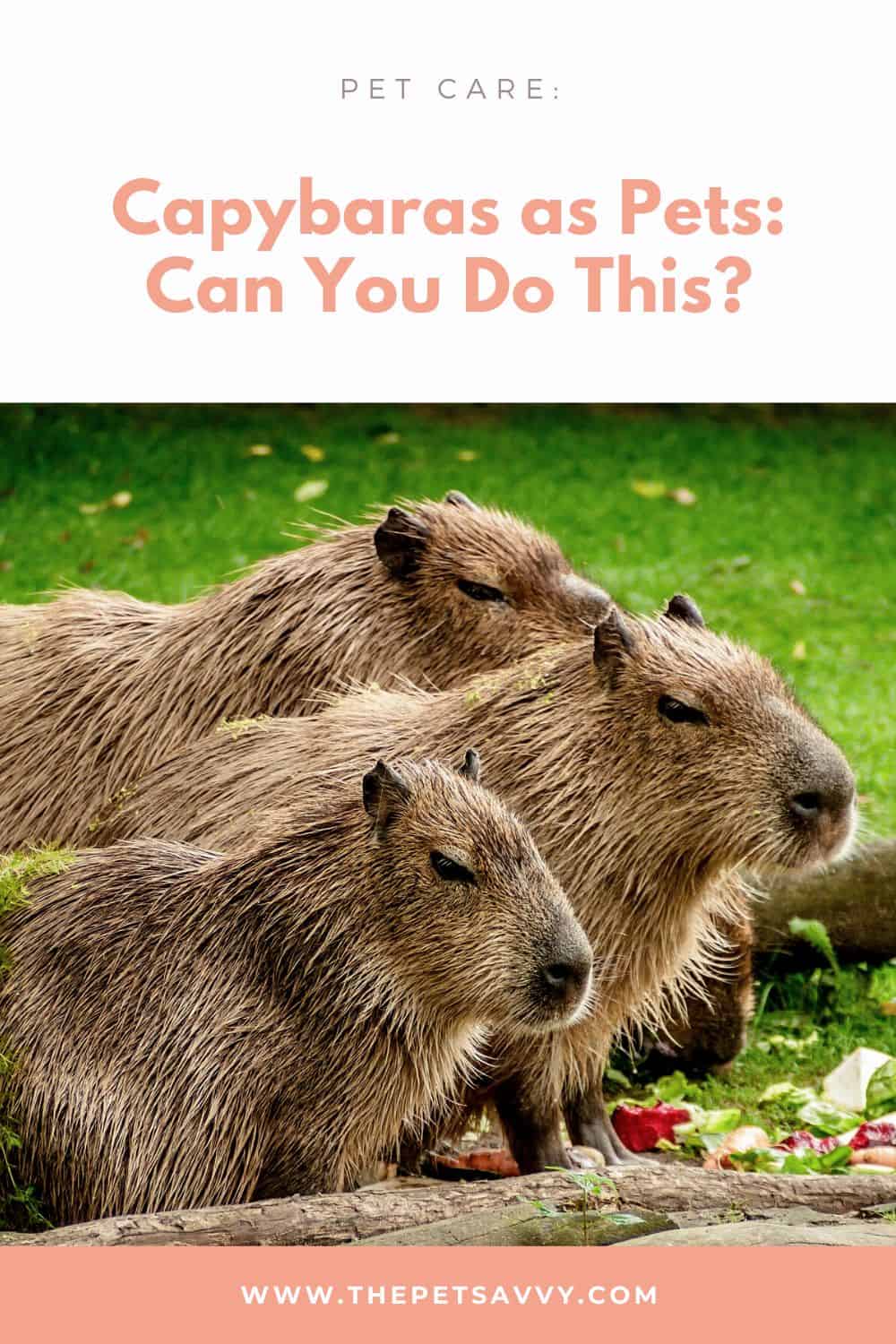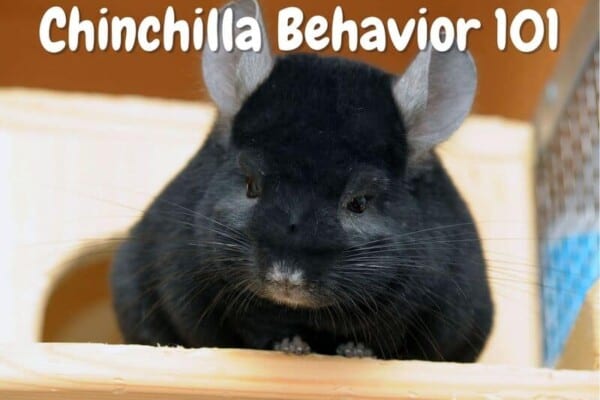Capybaras are all the rage right now, they’re incredibly unique, funny looking and best of all, they look like the perfect partner in crime to have besides you.
But this has led to a lot of people asking themselves whether or not they could technically raise one as a pet, and the answer they got was quite shocking to say the least.
Capybaras are generally quiet creatures that prefer to keep to themselves most of the time, but does this make them good indoor pets?
Well, a lot of people would argue that it does, which is a proven fact considering the growing number of capybara owners these days.
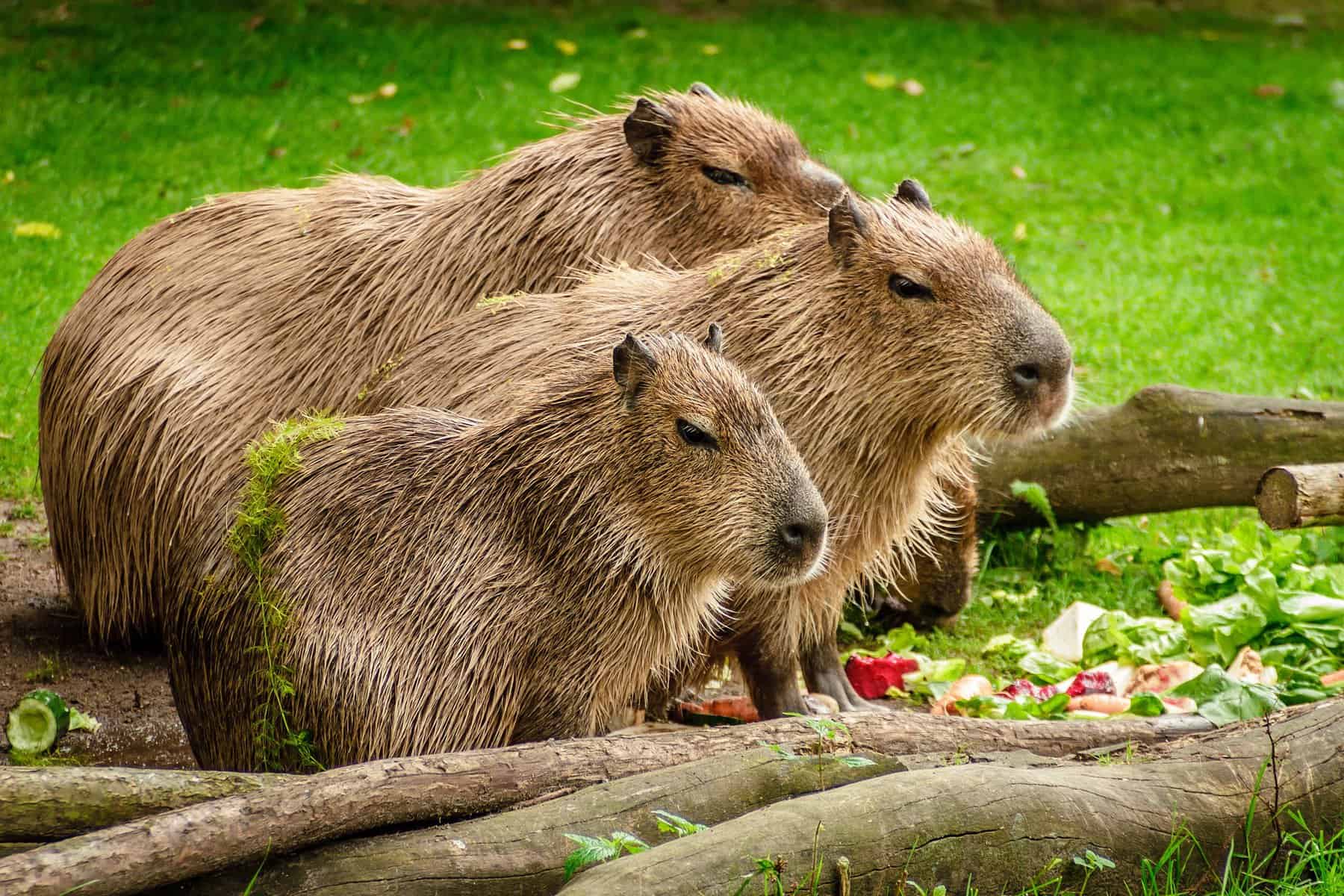
What makes them so great in the first place though is the fact that you don’t even need a very accommodating home to take care of your pet capybara.
In fact, capybaras are very low-maintenance creatures that will not cause you too much trouble in the first place.
They are the epitome of the gentle giant stereotype, as for the most part they keep to themselves and they pretty much never cause any problems.
Just keep in mind though that even though they are low maintenance creatures, they are not lap pets either.
So, while they are very cute and adorable, you can’t cuddle up to them like you would with a cat or a dog.
If you want to find out more about capybaras and whether or not you should consider raising one as a pet, keep on reading because we’re just getting started:
Is It Legal to Own Capybaras as Pets?
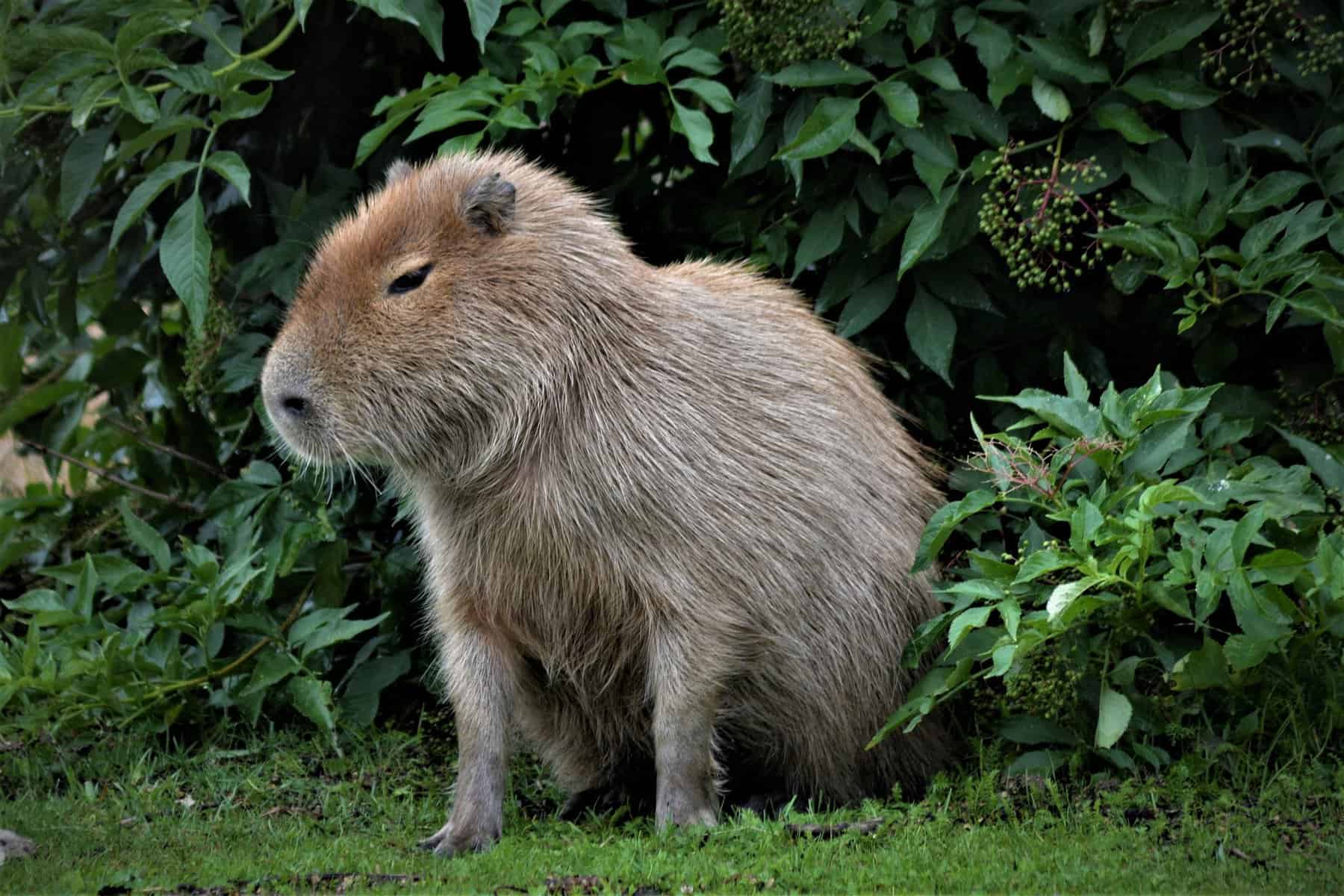
First and foremost, let’s answer the most important question that you should be asking yourself when adopting or buying any animal whatsoever, and that is the legality behind it all.
The reason as to why this is even brought up in the first place is the fact that capybaras are wild animals, no matter how calm and docile they may seem.
This calm nature though does make them a very good contender for the best wild animals to be domesticated and kept as pets, but is it actually legal in the first place?
The answer is that it entirely depends on the country you live in. In some of them it’s prohibited to own any sort of wild animals as pets, while in others it is allowed as long as you have a permit.
If you happen to live in the United States, you’ll be happy to hear that there are quite a few states which allow you to raise a capybara as a pet.
For example, in Texas and Pennsylvania it’s allowed to keep them as pets while in others you will need to get a special permit to raise a capybara.
Legal formalities aside though, if you do decide to adopt or buy a capybara and raise it as your own then you should first learn everything there is to know about the process. So, let’s start off with the basics:
The Average Lifespan of the Capybara
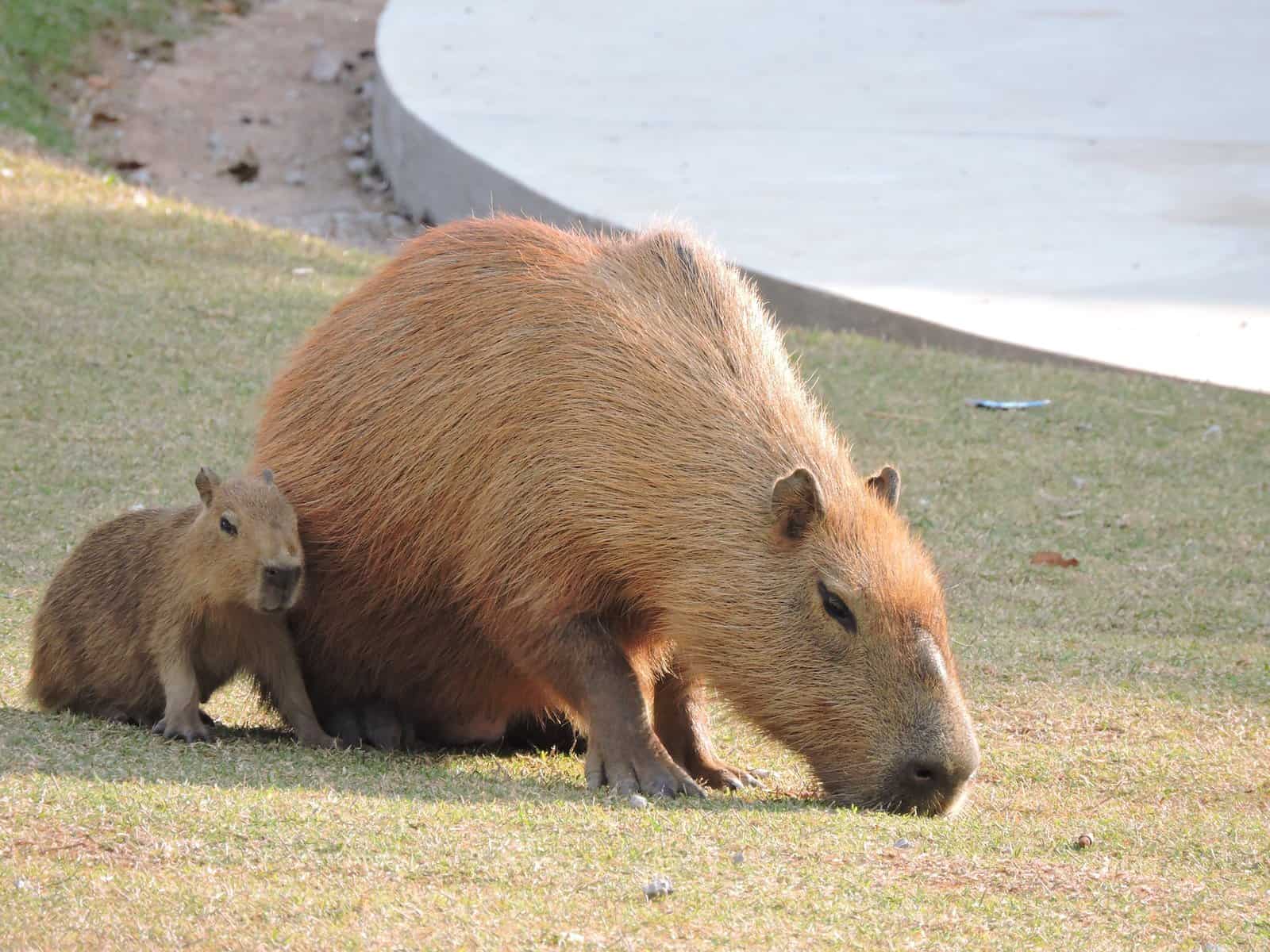
While the record for the longest living capybara is of 15.1 years, most of them will not grow any older than 8-10 years old, especially if they live in captivity.
The reason as to why we mentioned captivity there is the fact that in the wild, because of how slow and large they are, they are often times taken down by their natural predators.
So, jaguars, pumas, eagles and even humans will sometimes get the best of them, which is why in the wild they tend to live only around 4 years or so.
Do Capybaras Poop a Lot and Can They Be Potty Trained?
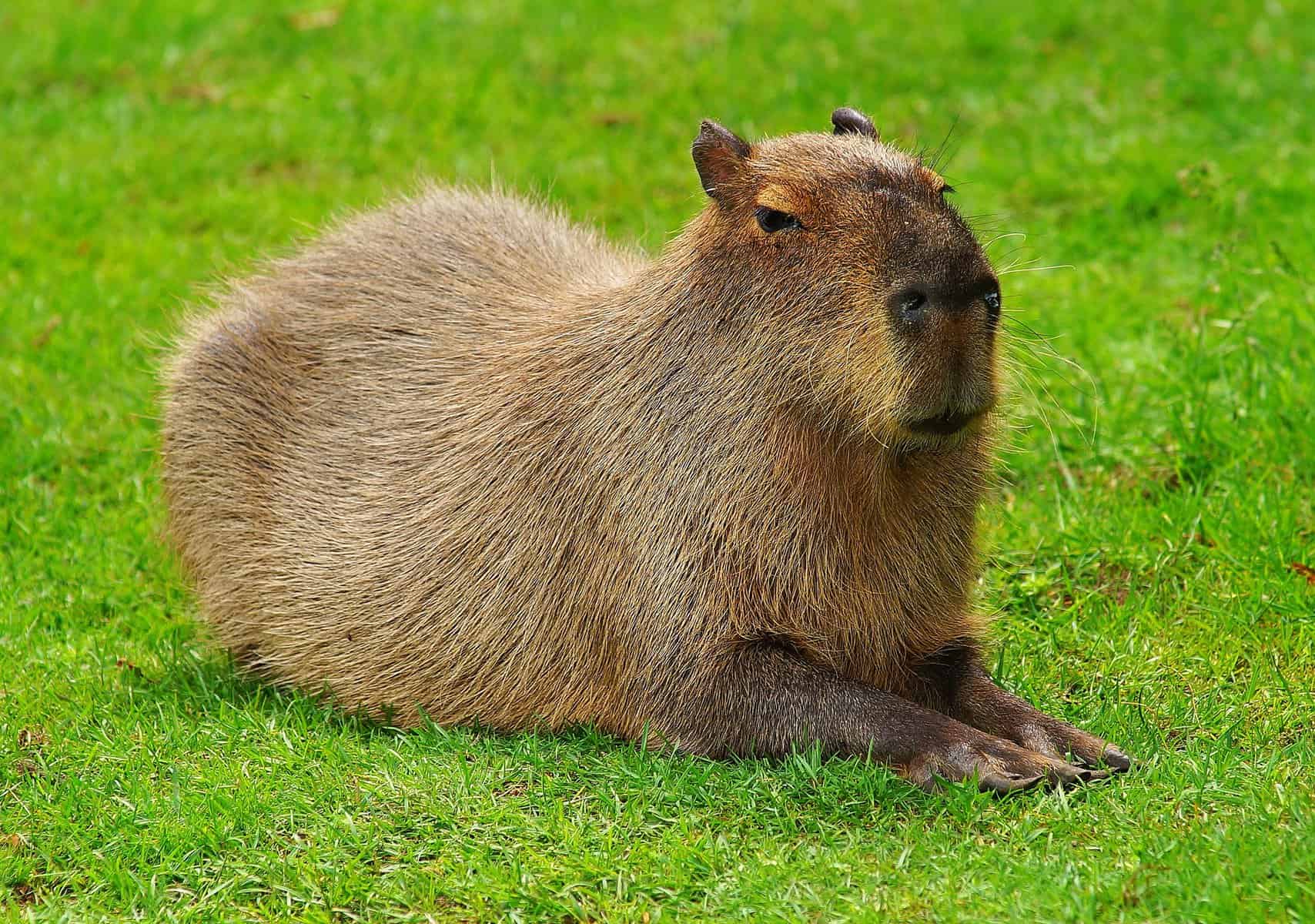
As is common with most other rodents out there, capybaras do have a very strong digestive system which makes them very proficient poopers.
On top of that they are fairly large creatures that eat a lot of grass on a daily basis, which does make them quite troublesome to keep indoors because they need to be let out so many times per day.
With that being said though, potty training your capybara isn’t impossible, although you will need to spend quite a long time working alongside your pet to make sure that they understand you.
Capybaras in the Wild
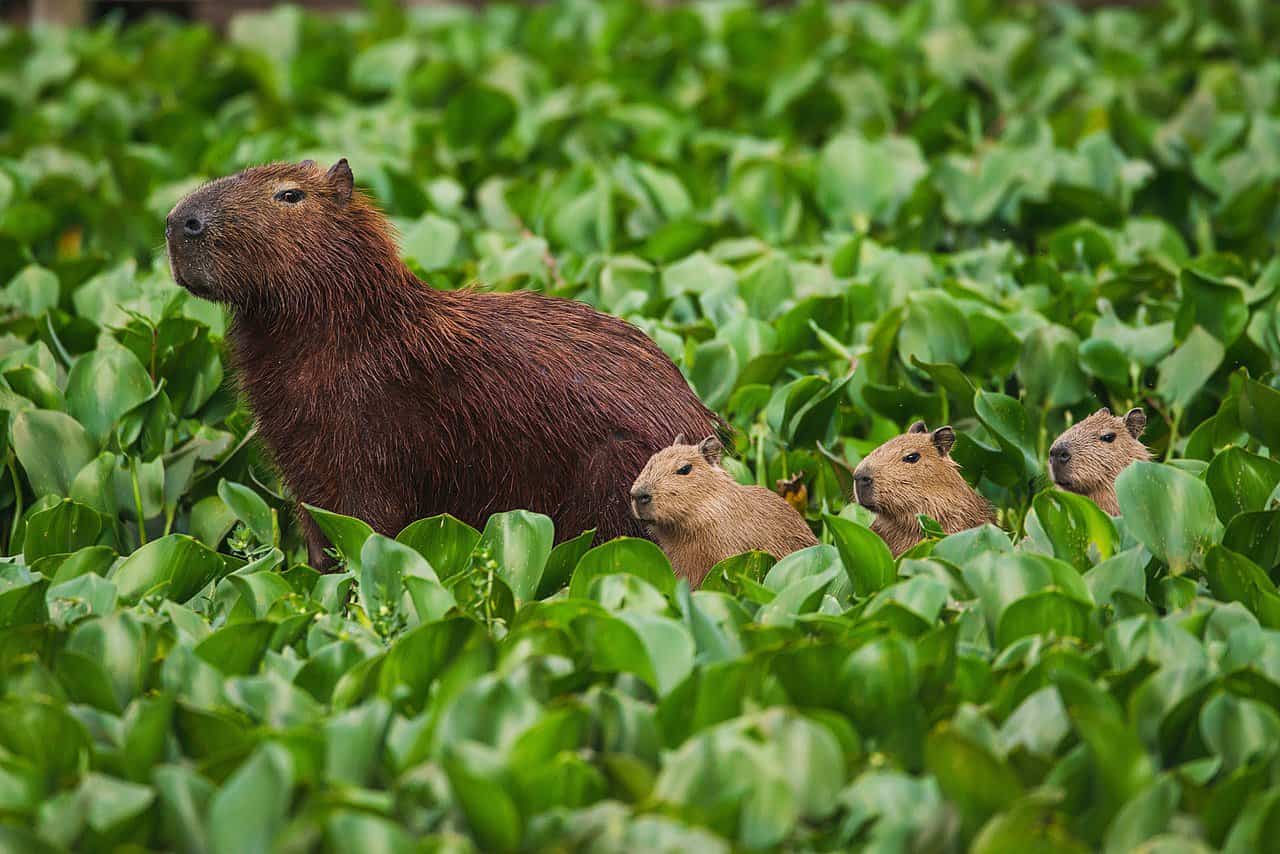
While we are on the subject of wilderness, we should mention here that capybaras are semi-aquatic creatures that can be found predominantly around South America.
They are especially large creatures that are capable of getting as heavy as 170 pounds or 77kg in total. Despite their fairly large size, capybaras are still related to the common guinea pig.
Because of their semi-aquatic nature, they prefer living close to large bodies of water, for which they are very well equipped.
They have partially webbed feet as well as fast-drying fur and let’s not forget about the fact that they can also hold their breath underwater for as long as 5 minutes at a time.
As far as their general food is concerned, they love consuming aquatic plants and grasses, but every now and then, which just so happens to be most mornings, they also sip on their protein-rich poo.
Capybaras generally love living alone, although in most cases they are surrounded by as many as 40 other capybaras just to increase their chances to survive in the wild.
Sadly, this is a must for a lot of capybaras as in the wilderness they are easy prey for animals such as jaguars and caimans.
As they grow up they also need to escape the grasp of boa constrictors as well as birds of prey, so their life in the wild is pretty much not ideal to say the least.
But even so, does this mean that you should feel good about taking them out of their native environment and raising them as your own?
This is a question that has been heavily debated for quite some time now, and even though there are more than a few groups that argue against domesticating your capybara, we see no reason as to why we shouldn’t give them a chance at a better life.
Capybaras’ Behavior and Temperament
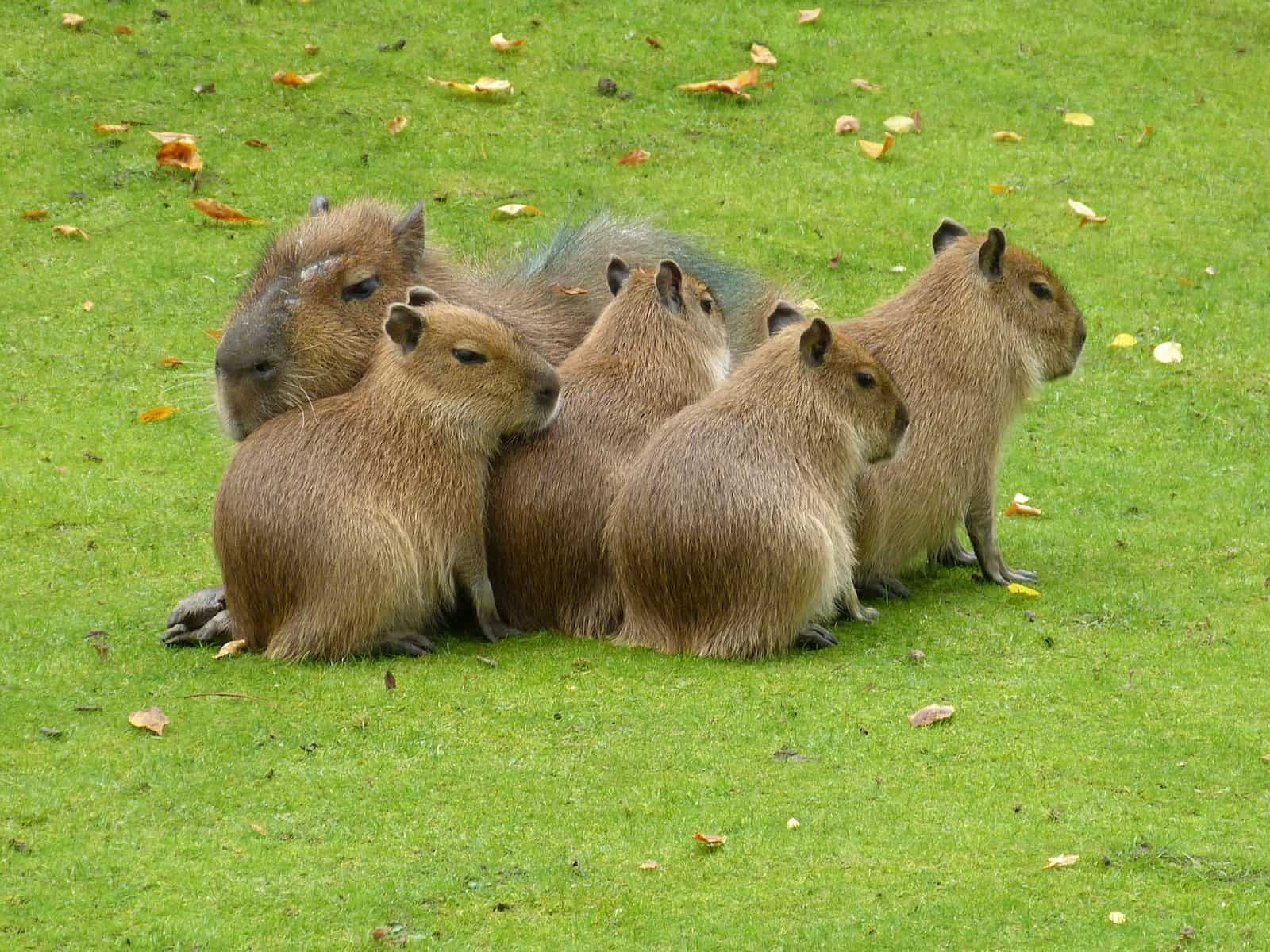
If you’ve ever raised a guinea pig before, chances are that you are already knowledgeable enough to know what to expect from capybaras.
That’s because they are distant relatives of the guinea pig, and in a lot of ways they’re pretty much just an oversized version of them.
So, most capybaras are very loving and affectionate animals that will keep to themselves a lot of the time but they’ll also enjoy the occasional head scratched too.
They are quite shy at first though so don’t expect them to be super cuddly with you. If they decide to open up to you then sure, but a lot of the time capybaras will never be fully comfortable with being around humans because they are not fully domesticated.
If you want to help create a solid bond between the two of you we recommend that you take a small handful of grass and you serve it to your capybara friend.
As they’re eating, you should comb them to make sure that they get used to your presence around them and at the same time you can talk with them and look them in the eyes.
If they feel threatened, chances are that your capybara friend will simply just walk away or in extreme cases they’ll run as far as possible.
But if they feel like you’re threatening them then you should back away slowly because while they are not aggressive creatures, they can still deliver a mean bite if they feel like it’s you or them.
Some capybaras love it when you cuddle up to them, while others prefer it if you just comb them every now and then and nothing more.
If they feel like it though they can also grow attached to other animals which they’ll make very clear by cuddling up to them.
If you happen to own multiple capybaras, chances are that they’ll start cuddling up to one another too which is quite a sight to see.
Are Capybaras Loud?
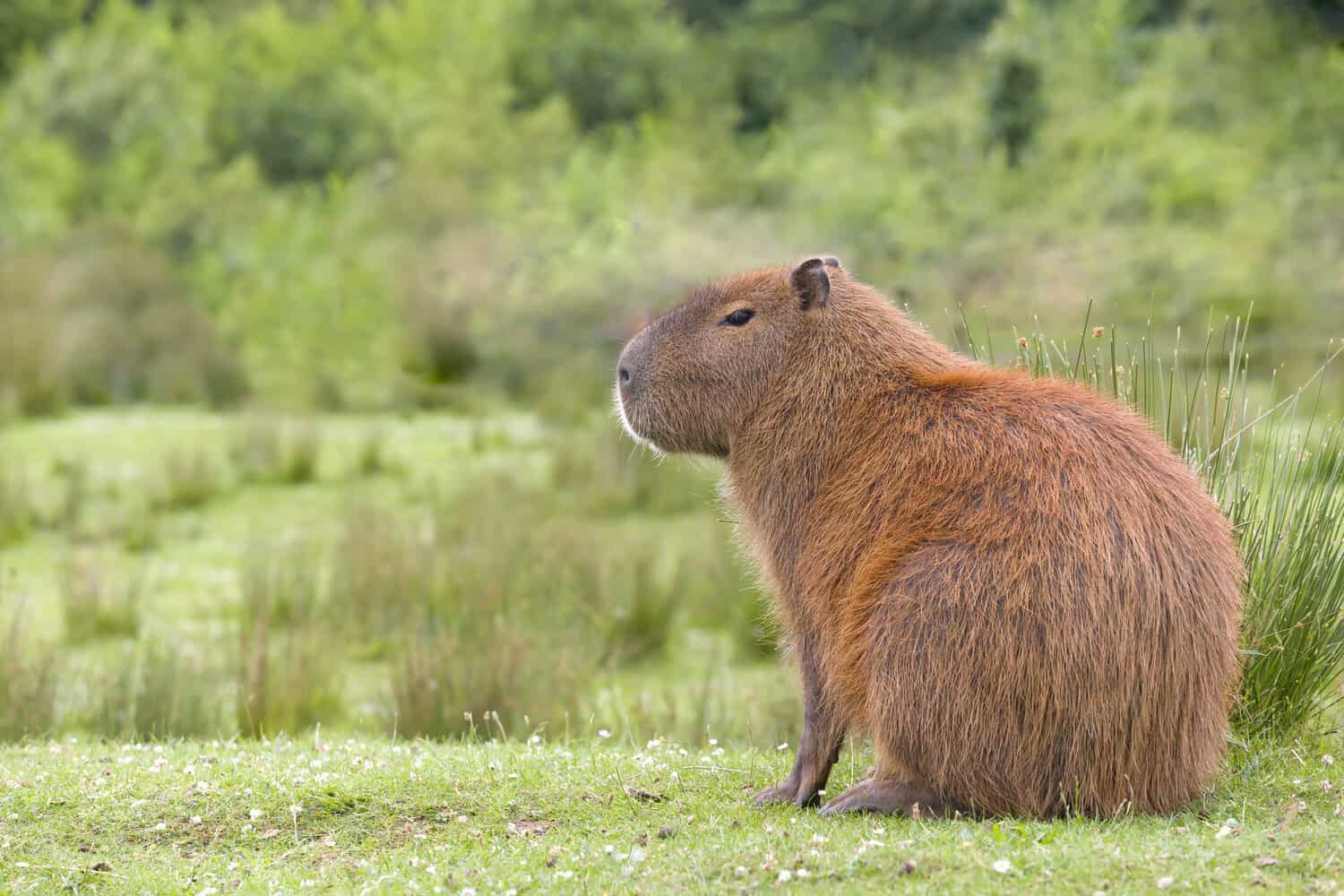
By now, you’ve definitely seen a video or two of capybaras just chilling alongside other animals, but did you know that despite their calm demeanor, they’re also amongst the most vocal creatures you’ll ever see?
They grunt a lot; they whistle every now and then and if there are other capybaras around them then they’ll most definitely communicate with one another on a daily basis.
They love communicating all day long too, and if they don’t have any other capybaras around them then they’ll most likely start communicating with you whenever they see you.
This is why it’s recommended that you always buy at least one companion of the same species with them so that they don’t grow lonely and depressed.
But with all of that being said, if you live in a generally quiet neighborhood and you want to adopt a silent animal, you should stay as far away from capybaras as possible because they’re anything but that.
Capybara’s Enclosure
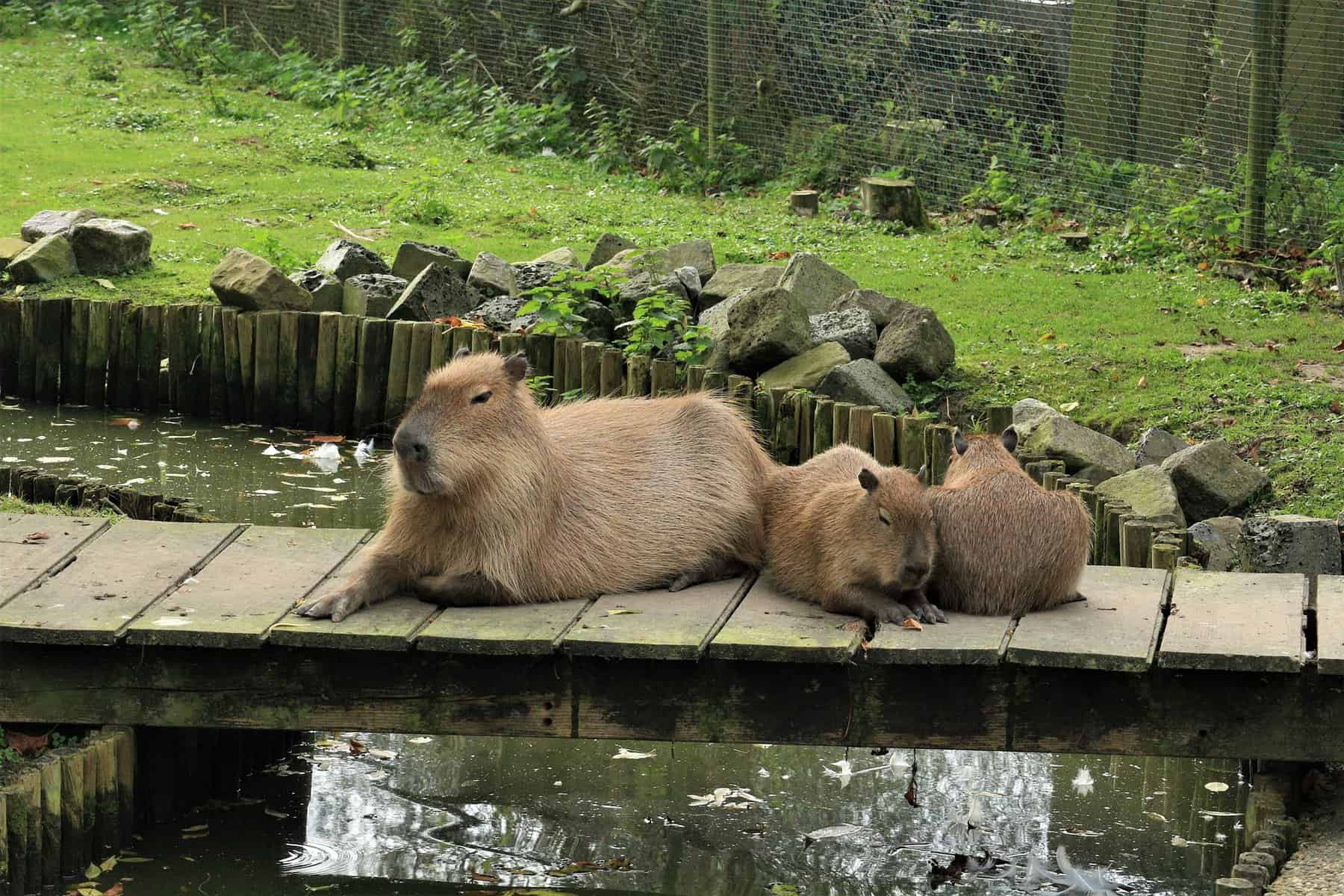
Considering the fact that capybaras are originally from the jungles of South America, it shouldn’t come off as a surprise that if you plan on raising them at your place, you should also provide them with a marshy environment.
At the same time, because they are not generally solitary creatures, you should make sure that you have plenty of space for the entire rodent family to move into your place.
So, you will need to invest in a pretty large fenced-in area which should be around 12 by 20 feet per pair.
The outside fence needs to be around 4 feet high and you need to keep a close eye on any large gap between the fences because if your capybara escapes it’ll most likely run as far as its little feet allow it to.
Inside of these enclosures you should throw in a few toys that your capybara can chew on, such as untreated wood or even dog toys as long as they are large enough so that the capybaras don’t end up choking on them.
Because capybaras are diurnal, it shouldn’t come off as a surprise that your pet will need to be kept both indoors and outdoors.
If the temperatures outside get a bit too cold or warm for your capybara (between 45- and 100-degrees Fahrenheit, you should have an area indoor where they can regulate their temperature easier.
What Do Capybaras Eat and Drink?
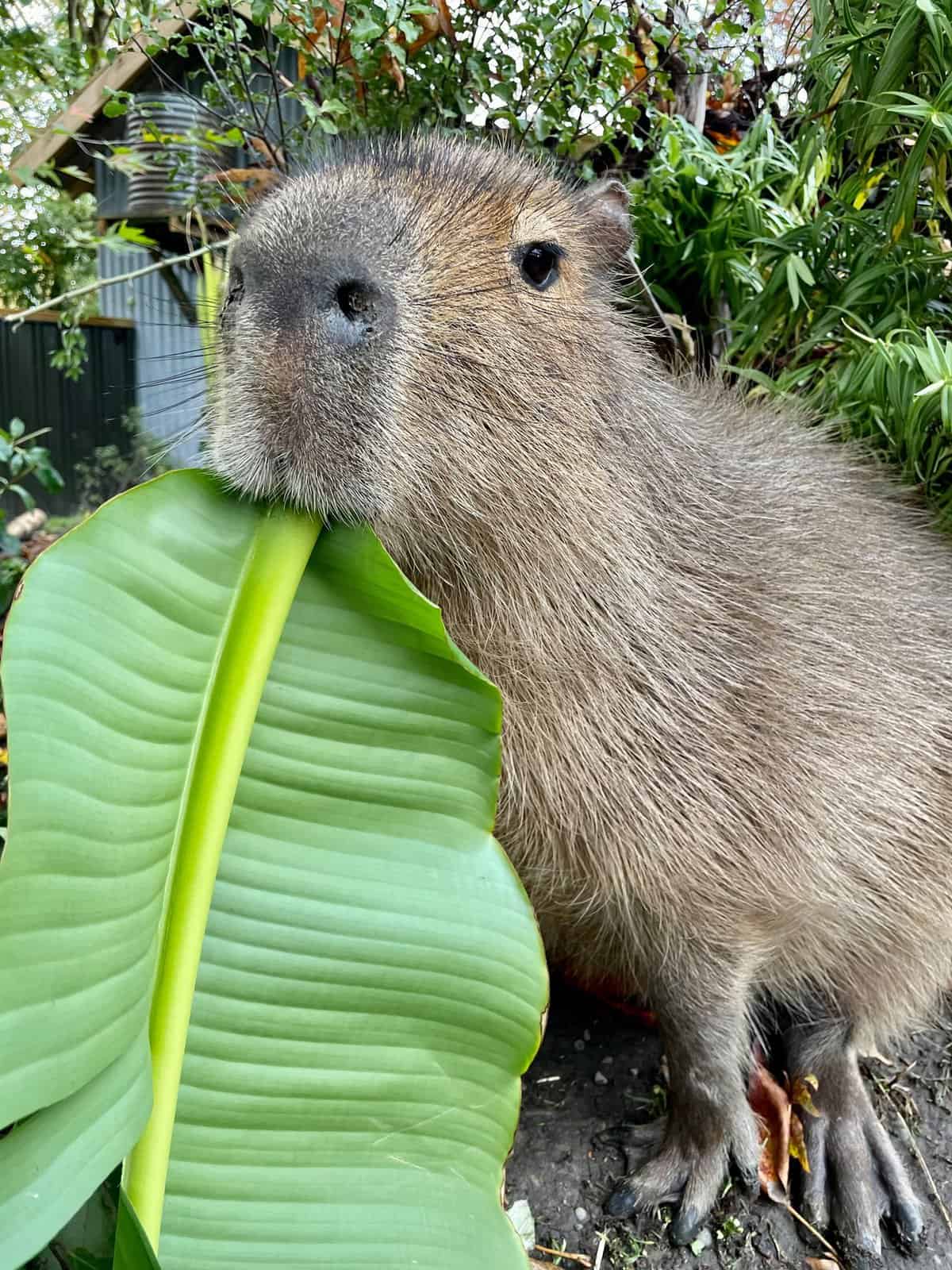
For the most part, capybaras get most of their nutrients from around three to six plant species in the wild.
By far the most common ingredient that no capybara diet should lack in is high-quality hay grass, and you should offer it to your pet in either piles or bales.
Orchard hay or Timothy hay are perfect for this too, but just keep in mind that the hay in itself is not rich enough in nutrients to keep your capybara healthy and happy.
At the same time, keep in mind that the capybara’s teeth will never stop growing, so you will need to give them food and toys to chew on so that they don’t grow too large.
So, be sure to add in hay, grass, wood and even dog toys to your capybara’s life to make sure that they don’t develop an overbite.
In case you didn’t know about this and your capybara has developed an overbite you will need to contact a specialized exotics veterinarian to solve the problem.
You should also feed your capybara guinea pig pellets that come with extra vitamin C in a feeding bowl on a daily basis.
That’s because, similarly to guinea pigs, your capybara can’t produce enough vitamin C to survive on their own, which means you’ll need to supplement their diet with it.
So, consider adding in veggies with lots of vitamin C such as carrots, apples and even yams, but do so sparingly as you don’t want them to get hooked on the sugar.
The Common Health Problems of the Capybara
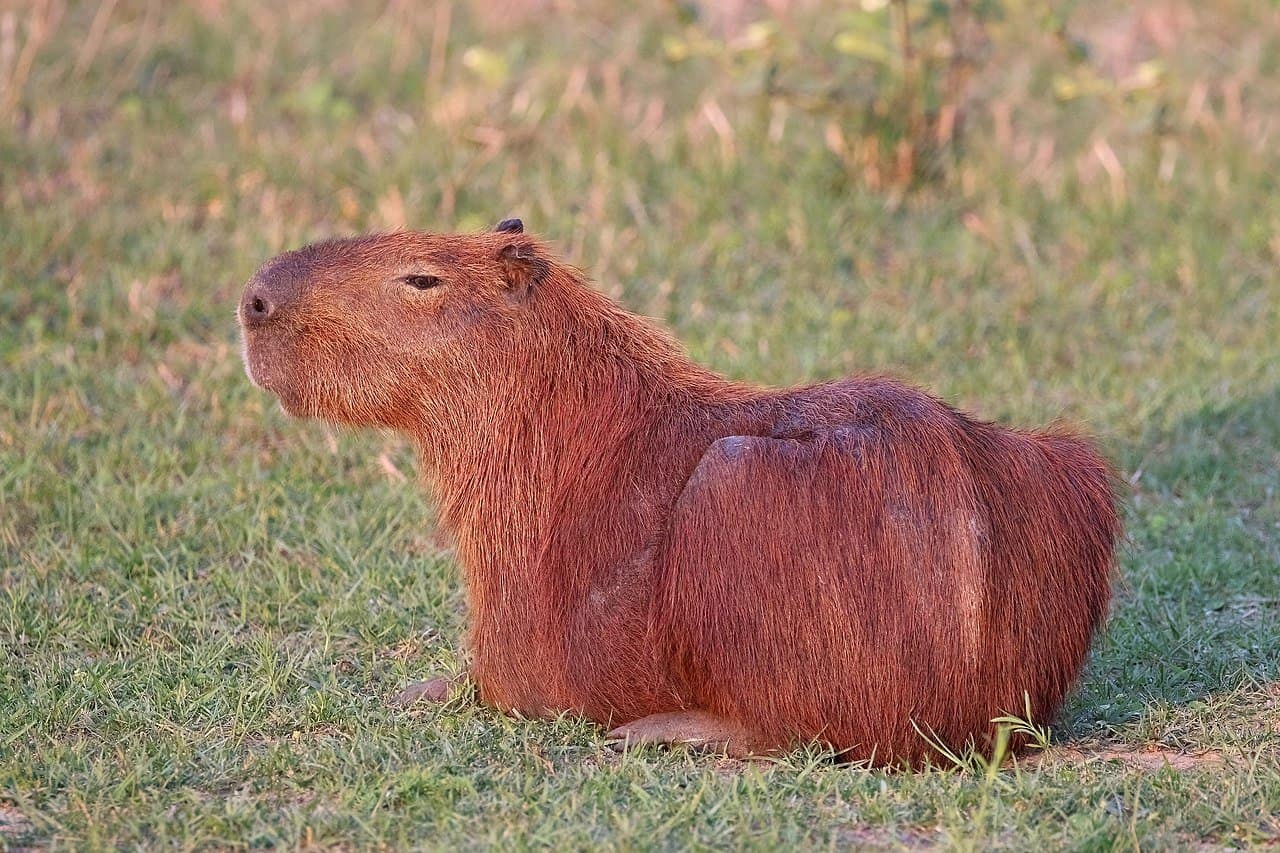
Aside from the aforementioned vitamin C deficiency, capybaras are generally very hardy creatures that don’t need a lot to survive.
They can develop respiratory infections and they can get infested with mites or lice but that is a universal problem with rodents in general. You can avoid this by simply keeping their pen clean.
You can quickly tell if your capybara is having a good time based on its eating habits and its vocalness. If they stop whistling altogether or they’re skipping meals, something’s definitely wrong with your capybara.
Grooming Tips and Tricks
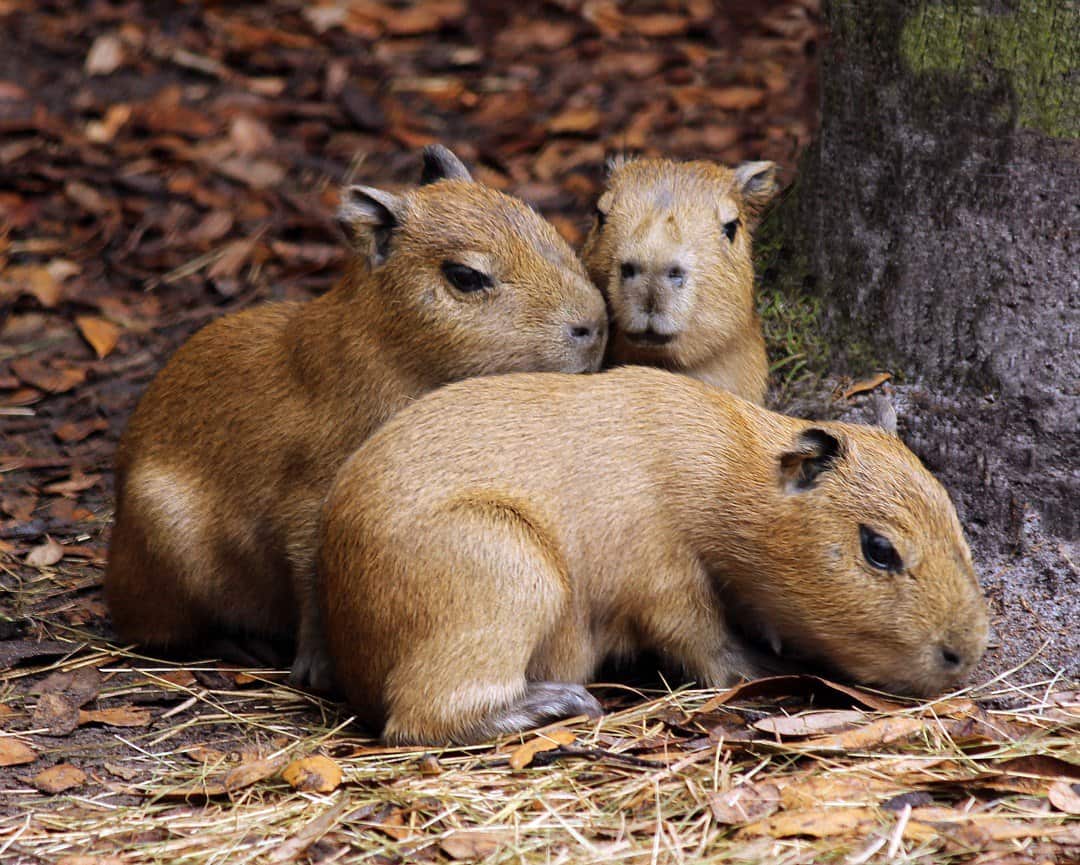
Capybaras actually don’t need all that much grooming to live long and happy lives. Still, you should know that they do drop a few hairs every now and then, so you can comb them once per day or every other day.
Bathing on the other hand is very much so a must for your capybara, so use this opportunity to comb through their hair and pet them just to make sure that they understand that you’re doing this for their own good.
The Pros and Cons of Owning a Pet Capybara
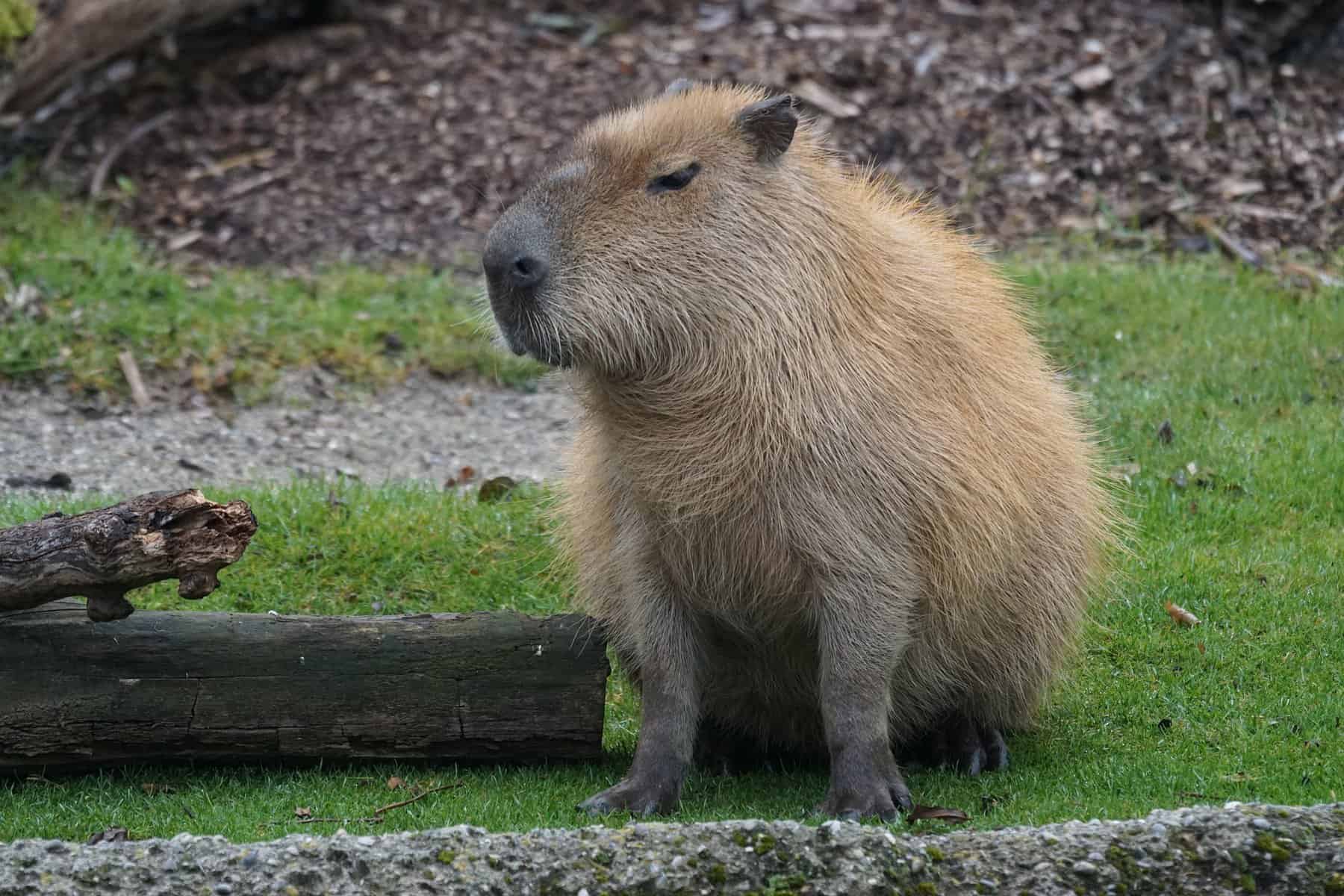
As far as the pros are concerned, you have the fact that they are very low maintenance creatures that don’t shed all that much and on top of that they don’t have a specific body odor either.
They are very kind hearted and calm individuals and they seem to absolutely love being petted by their caretakers.
Cons wise they can be quite expensive, they need access to a lot of water and they tend to poop a lot, especially in that water so you may need to clean that water every few days or so.
How Much Do Capybaras Cost?
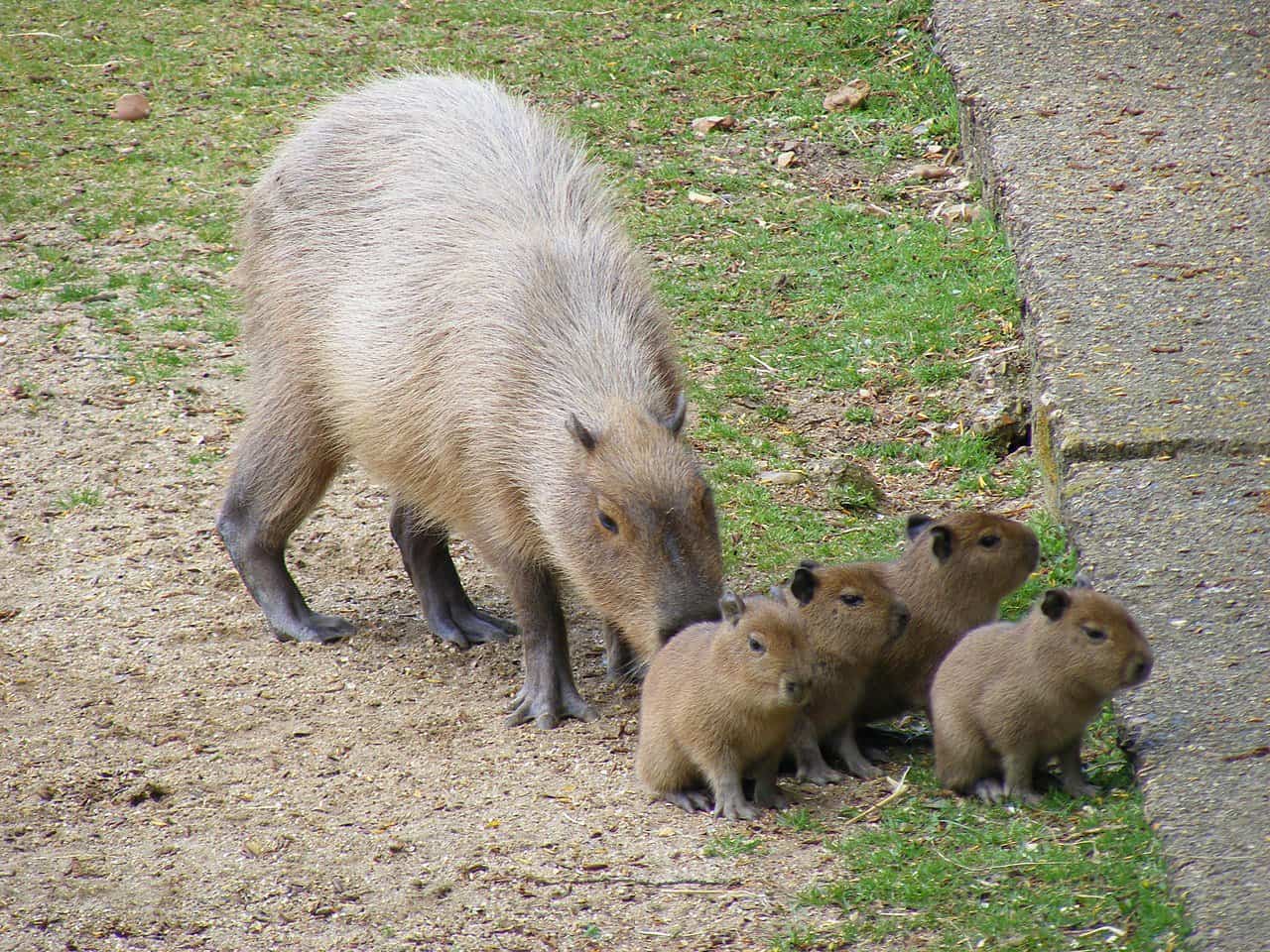
If you will buy your capybara from a reputable breeder, which we hope you will, you should know that most of them cost around $1,000 to $3,000 each.
Why such a steep price? Well, that’s because they are exotic animals and as such you will need to pay a bit more to get your hands on one.
At the same time you should know that female capybaras are a lot more expensive than males.
Conclusion
So, there you have it, that’s all there is to know about owning a pet capybara. Should you do it?
Well, at the end of the day it is entirely up to you, but as far as we can tell, if you read through every positive and negative that there is to raising ca capybara and you still want to proceed, go for it.
Contents
- Is It Legal to Own Capybaras as Pets?
- The Average Lifespan of the Capybara
- Do Capybaras Poop a Lot and Can They Be Potty Trained?
- Capybaras in the Wild
- Capybaras’ Behavior and Temperament
- Are Capybaras Loud?
- Capybara’s Enclosure
- What Do Capybaras Eat and Drink?
- The Common Health Problems of the Capybara
- Grooming Tips and Tricks
- The Pros and Cons of Owning a Pet Capybara
- How Much Do Capybaras Cost?

